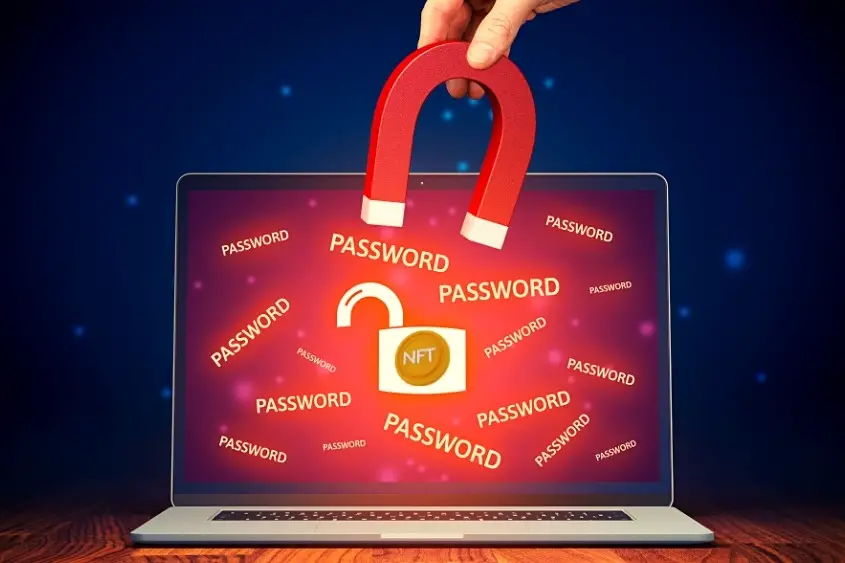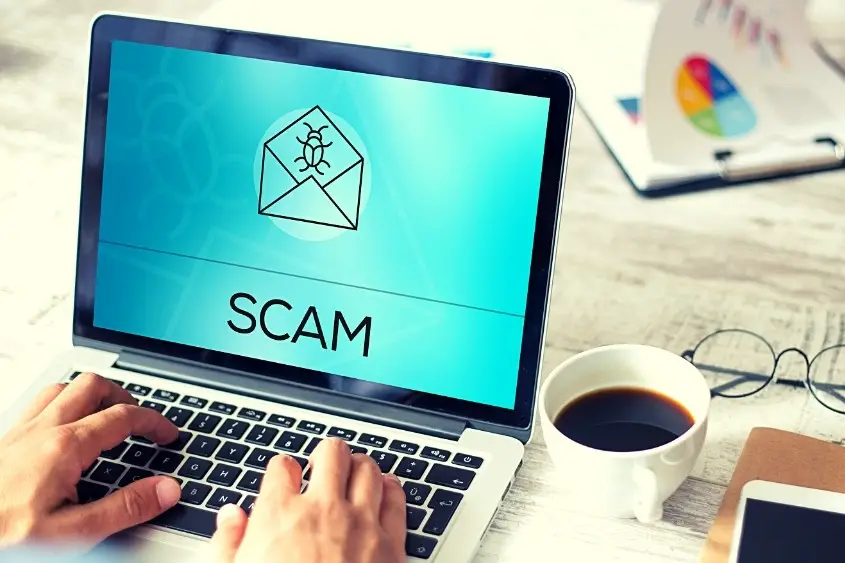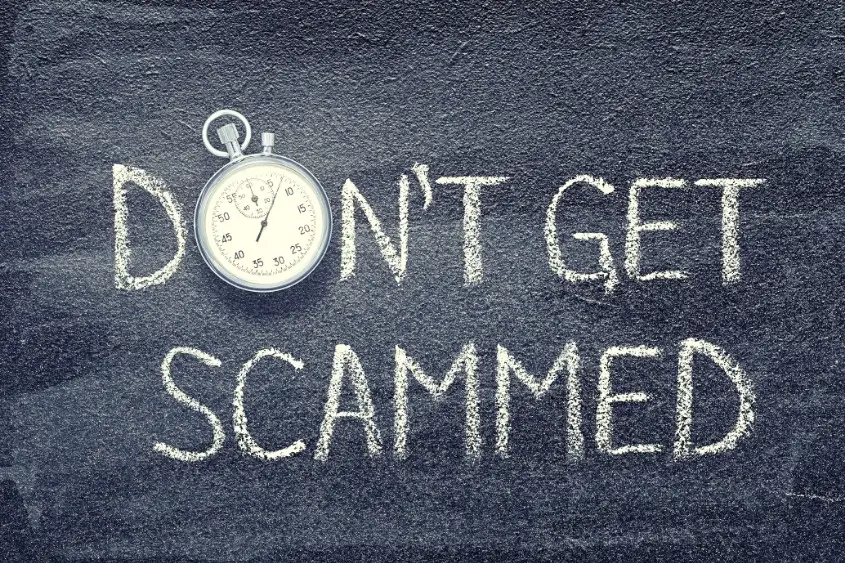The NFT space is abundant with investors, collectors, and creators alike. With the amount of money that is flowing through the market, in addition to the value that some of these digital assets hold, you might be wondering if an NFT can be stolen.
Your NFT can be stolen by clicking on a bad link, exposing your secret phrase, or via user error. Technically speaking, your NFT can’t simply be taken out of nowhere, rather, you would have to give a hacker access to your wallet where your NFTs are stored.
There are many ways that your NFT could be stolen. Likewise, there is an equal amount of ways to avoid this from ever happening to you. Let’s take a look at how your NFTs could be compromised and how to avoid ever ending up in such a scenario.
Can an NFT Be Stolen?
Technically, the most common way that NFTs are stolen is due to user error. An NFT can’t be stolen unless the hacker can gain access to your wallet or you willingly send your NFT to a hacker.

I know what you’re thinking, why would someone ever willingly send an NFT to a hacker? Well, hackers are smart, and they know how to persuade others in order to get what they want.
So, unless you give someone a way to gain access to your wallet, or you willingly send someone your NFT, it would be rather difficult to steal your NFT. With that being said, NFTs are “stolen” every day through deceptive scams and exploitations.
I think the question then becomes, how are NFTs stolen and how do you avoid putting yourself in a situation where you could become the victim of such scams?
How Are NFTs Stolen?
Unfortunately, NFTs are stolen on a daily basis through a variety of scams. Some scams are very well thought out, while others are blatantly obvious. Both novices in the NFT space as well as veterans have been scammed, so that’s not to say that only certain people have had their NFTs stolen.

Below I have outlined some of the most common ways NFTs are stolen every day.
Deception
Deception is one of the most common NFT scams in the industry. Users are often tricked into transferring their NFTs or providing access to the wallet. Oftentimes, scammers will approach you in your DMs either offering you help or a deal that is too good to pass up. That should be the first red flag.
Also, many scammers will create fake profiles impersonating trusted influencers or companies in the space. Then, they approach you offering to help you with a problem you’ve been experiencing, a deal you can’t pass up, as well as a link accompanying these offers. Huge red flag!
Deception is lurking in every corner of the web, so you need to remain extremely vigilant at all times.
Exploitation
Exploitation is another common way that NFTs are stolen. Usually, exploitation is the result of an NFT platform that has a weak point in its’ contract, where hackers could then use that to their advantage, resulting in stolen NFTs and crypto.
OpenSea and Treasure marketplaces are two examples of exploitations that resulted in stolen NFTs. Essentially, hackers were able to modify the platform’s contract to create an order that resulted in NFTs being sold for very cheap, and some for $0.
The NFTs that were affected were ones that were currently listed, or that had been previously listed but never canceled.
User-error
In most cases, a stolen NFT is the result of user error. Just about all stolen NFTs could have been avoided had the user been more aware of these common scams. Whether you click on a bad link, willingly send your NFT away, or give a hacker access to your wallet info, these are all mistakes that can be avoided.
So, what measures can you take to ensure your NFTs are less likely to be stolen? Great question, let’s talk about it.
How to Prevent Your NFTs from Being Stolen
Now that you know some of the most common methods scammers are using to steal NFTs, we can better approach how to avoid your NFTs from being stolen. Here are some key points to reduce the likelihood of your NFTs being stolen.

1. Never share your secret phrase
It seems obvious, but it needs to be said. Never share your passwords or wallet secret phrase with anyone. I don’t care if it’s your grandma or your favorite influencer, there is no reason to ever share your wallet secret phrase with anyone.
2. Don’t store your secret phrase on your computer or other devices
I don’t care how secure you think your computer or mobile device is, never store your passwords or wallet secret phrase on any device. Hackers can easily gain access to your devices and they will find your secret phrase. Rather, write them down and keep them in a safe place.
3. Never click on links you don’t trust
This is so important! Never click on any links that you don’t absolutely trust. I mean it. If you click on a link and sign any transaction using your wallet, it’s game over.
4. Don’t share your screen with anyone
Generally, scammers will target people in distress. Just know, if someone is asking you to share your screen with them, it is a guaranteed scam. Never share your screen with any person or company.
5. If an offer is too good to be true, it’s a scam
I know you might not want to hear this, but you need to. If someone offers you something that seems like a great deal, it’s because it is a great deal; for the scammer. Don’t trust any random offers, especially if you have to connect your wallet or pay for anything.
6. Enable 2-step authentication
You should always enable 2-step authentication on every single device and platform that you use. Every extra layer of security is another wall hackers and scammers have to get through. Put up as many walls as you can.
7. Store your NFTs in a hardware wallet
If you are storing NFTs for any amount of time, you need to get yourself a hardware wallet. Hardware wallets store all your important wallet data such as password, pin, and secret phrase offline, making your wallet less accessible to hackers.
8. Always do your own research
Before you buy an NFT, you should always do your own research. Research the creator, the platform, and the community. At least 50 hours of research is recommended before buying an NFT. Trust me, it’s worth the patience.
Can You Recover a Stolen NFT?
If your NFT is stolen, there is no guaranteed way to recover it, unfortunately. On the bright side, since everything is tracked on the blockchain you can follow your NFT even after it has been stolen, meaning you can track who stole it.

Another positive note is that just because it’s an NFT that was stolen, doesn’t mean you don’t have legal rights. According to NFTtorney, the Computer Fraud and Abuse Act of 1986 makes it a crime to access a computer or database without permission, or exceeding any given permission.
This act provides both criminal and civil remedies, meaning that victims can bring an independent civil complaint against the scammer to recover their stolen property or monetary equivalent.
Although there isn’t an assured method for retrieving stolen NFTs, there is still hope. However, I am a firm believer that it’s best to use the preventative measures mentioned above to avoid ending up in this situation in the first place.
Sure, maybe you can’t 100 percent guarantee that your NFTs won’t be stolen, but you can do everything in your power to ensure that you are taking steps to remain as safe and secure as possible.

2 thoughts on “Can NFTs Be Stolen? (+ Tips to Keep Your Digital Assets Safe)”
Comments are closed.